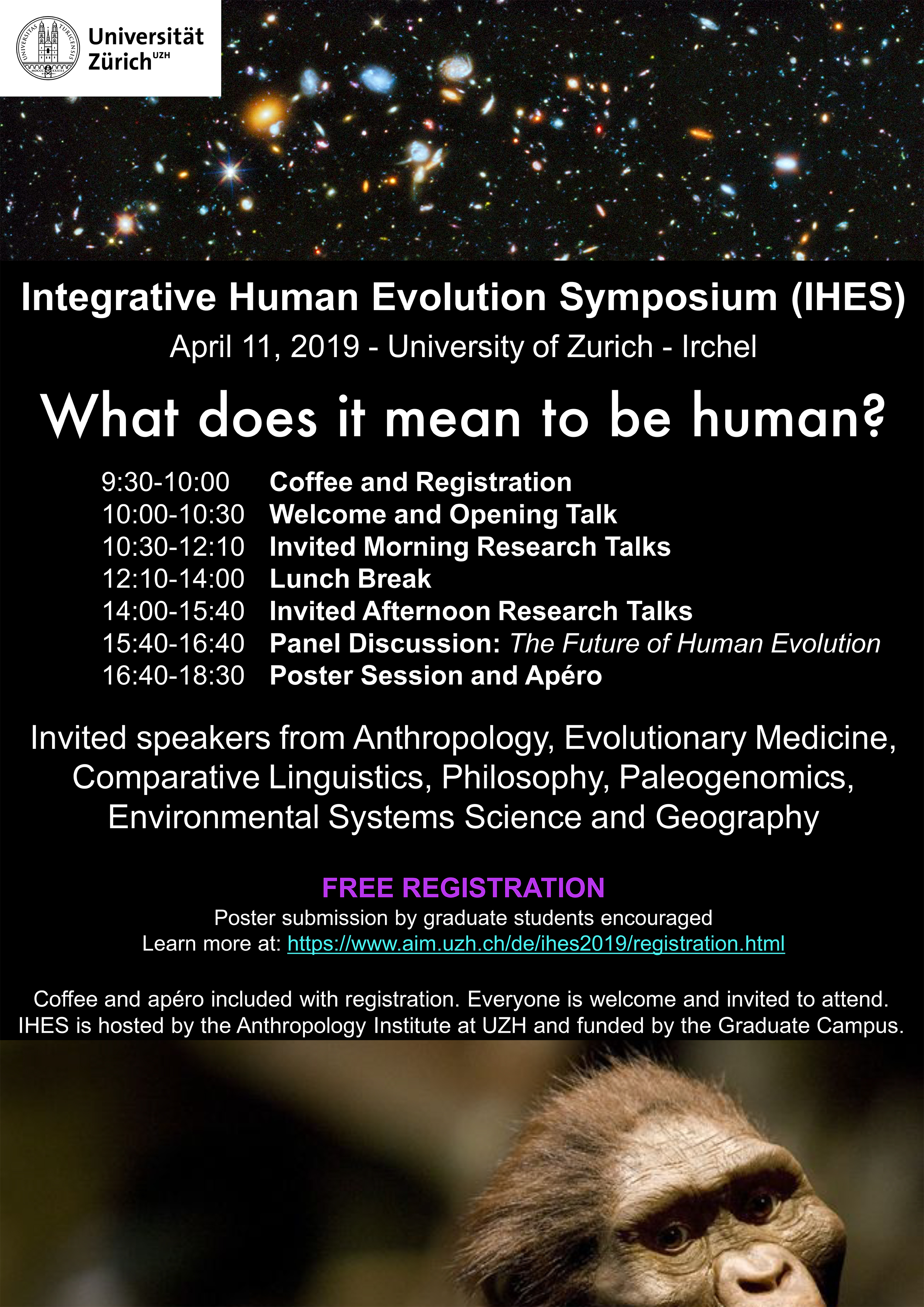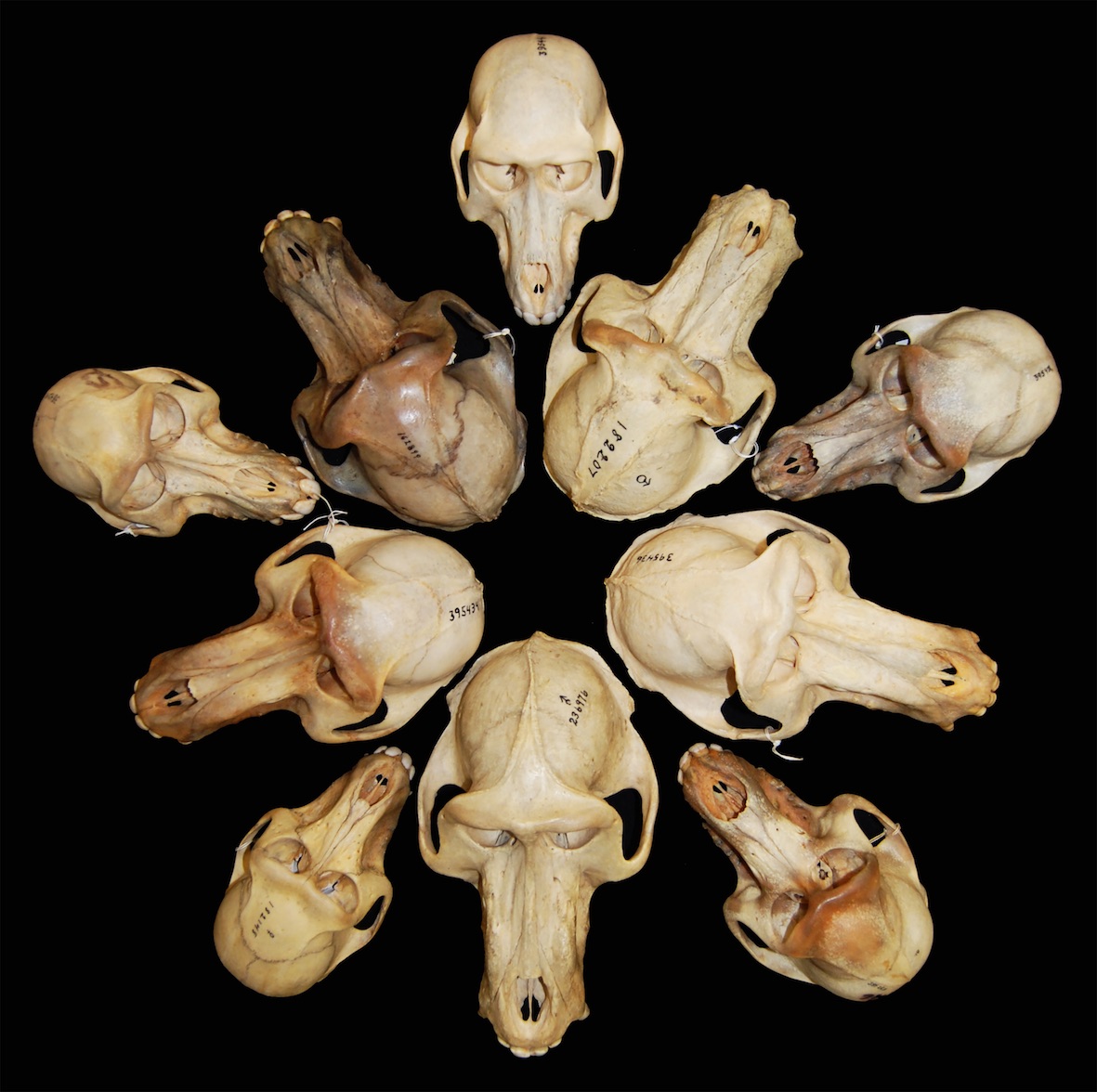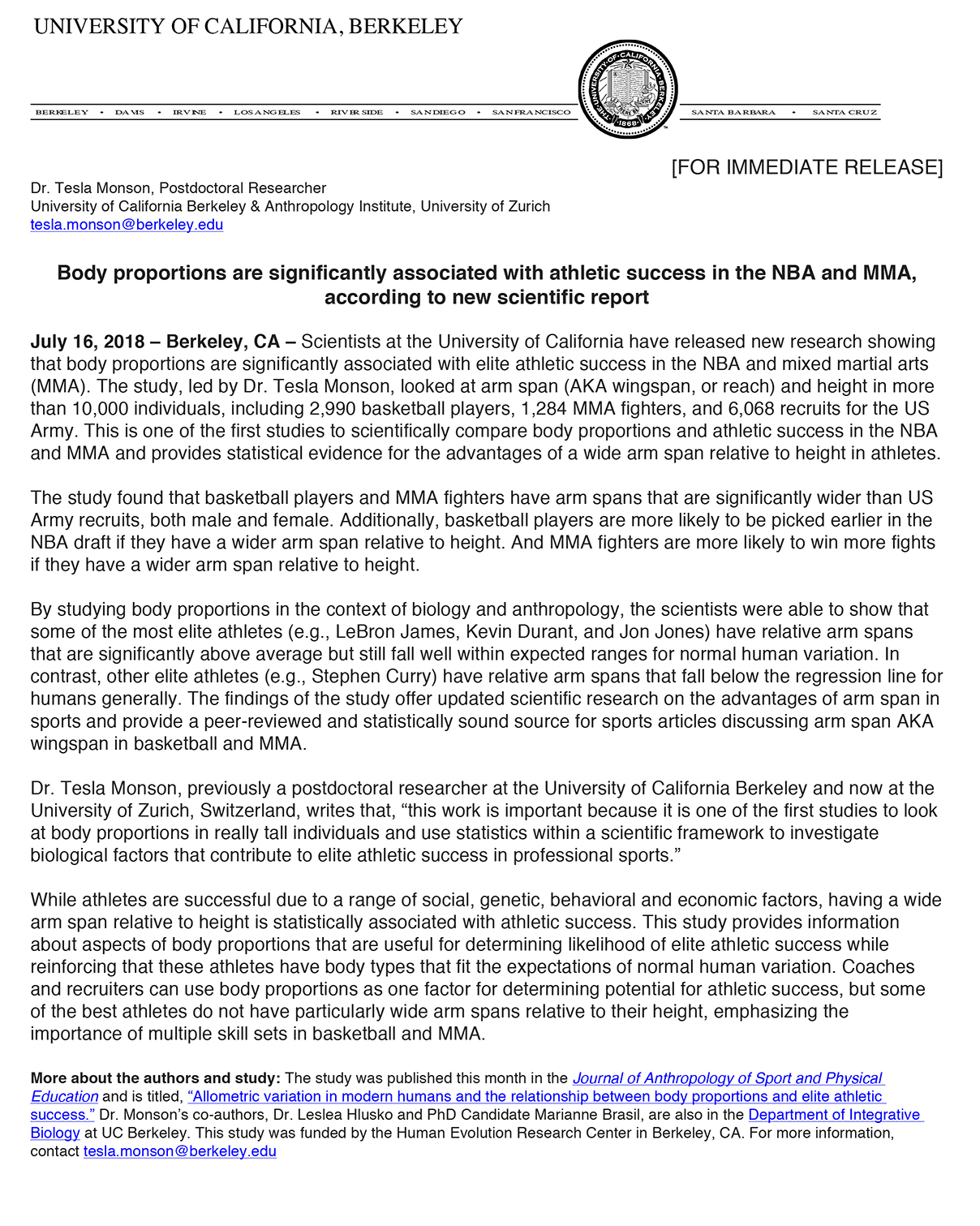Along with PhD student Rahel Brügger, I am hosting the 2019 Integrative Human Evolution Symposium! The Integrative Human Evolution Symposium (IHES 2019) is a one-day Symposium, the first of its kind in Zurich, to be held at the University of Zurich Irchel Campus on April 11th, 2019. The Symposium is free, open to the public, and in English.
At the Symposium, invited early-career researchers from universities in Switzerland in the fields of Anthropology, Evolutionary Medicine, Comparative Linguistics, Philosophy, Paleogenomics, Environmental Systems Science, and Geography will talk about human evolutionary studies, past and future.
We were awarded funding from the Graduate Campus at UZH to organize and host this interdisciplinary symposium, with four primary mission goals: 1) To provide career development opportunities for junior researchers (graduate students and postdoctoral researchers), 2) To facilitate an interdisciplinary research environment, 3) To promote a platform for diversity in academia and the sciences, and 4) To offer an opportunity for science communication and education.
Everyone is welcome and invited to attend this free Symposium. If you are in Zurich, we hope to see you there!














